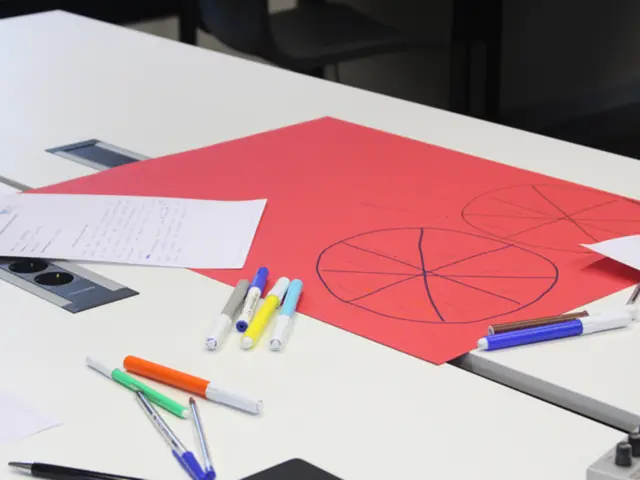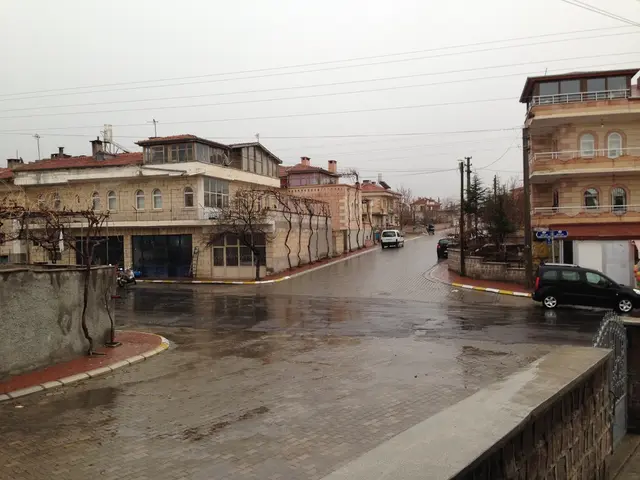Childcare Assistance After Calamities is a Valuable Resource. However, It's Inadequate.
In the sprawling city of Los Angeles, January saw an early burst of wildfires - a result of dry conditions and hurricane-force winds that raised worries about our changing climate. In fact, scientists estimate that these fire-prone conditions were about 35% more likely due to climate change.
For Felisa Wright, a dedicated daycare provider targeted by the fires, life took a swift turn. Waking up to fierce winds and smoke, Wright knew it was time to leave and didn't return until later to see her home reduced to ashes - along with the 15 years of learning and play equipment she'd carefully built for her daycare.
Wright is eager to resume caring for the 14 children that relied on her, but faces significant obstacles. The real estate market in her area has been devastated, and she's finding it hard to secure a new home or even qualify for a loan from the Small Business Administration. To make matters worse, the SBA requires collateral for disaster loans, leaving renters like Wright in a tight spot.

Amidst all this chaos, volunteer childcare providers stepped in to offer a lifeline. Robin Szidak, another local who found her home destroyed, was amazed by the willingness and skills of the volunteers. Their assistance allowed Szidak to focus on other pressing matters, acting as a much-needed bridge to help families recover.
But the National Emergency Child Care Network, which organized these volunteers, is a small organization that can't help everyone. State-funded childcare programs often provide limited assistance, and many families may not qualify for help.

Climate-linked disasters can have a wide range of impacts on childcare systems, from physical damage to buildings, air pollution, and challenges for childcare workers. The aftermath of these disasters can be long-lasting, and effectively addressing the problem requires both emergency response plans and broad-based policy solutions.
As the impacts of climate change become more frequent and intense, it's clear that we must prioritize the well-being of children and caregivers in disaster planning and recovery efforts. For Felisa Wright and countless others, the stakes couldn't be higher.

Additional Insights:- The devastating fires in 2023 affected more than just homes; they also disrupted childcare services. About half of the licensed childcare centers in Lahaina, Hawaii were destroyed by a fire that year.- Recovery efforts face significant challenges due to factors like socioeconomic vulnerability, infrastructure resilience, and available community resources. In some regions, climate-related disasters can compound existing care challenges.- Despite facing numerous hurdles, many childcare providers are resilient and dedicated to their work. Always looking for ways to improve and adapt, they play a critical role in helping children and families navigate through difficult times.- The ongoing threat of climate-related disasters underscores the importance of investing in climate-resilient infrastructure, ensuring access to mental health services, and developing emergency response plans that prioritize childcare continuity.- The aftermath of disasters can last for months or even years, and it's essential that support efforts remain in place for as long as they're needed. Without adequate support, families may struggle to recover from the trauma caused by these events.
[1] Kuehn, S. (2021, September 15). The emotional toll on teachers of disasters and pandemics. Education Week. https://www.whitakercenter.psu.edu/research/where-teachers-are-living-through-disasters-and-pandemics-getting-support-mental-health-they-need[2] National Center for Disaster Preparedness. (2021). Lessons learned from children impacted by Hurricane Michael and wildfires across the Western United States in 2018. National Center for Disaster Preparedness. https://www.ncdp.columbia.edu/sites/default/files/pdf/NCDP_Child_Disaster_LessonsLearnedReport_0.pdf[3] Why climate change could spell disaster for U.S. childcare centers. (2021, February 15). KQED. https://www.kqed.org/sciencespirit/16465684/climate-change-could-spell-disaster-for-us-childcare-centers[4] What a decade of climate disasters showed us about child care. (2021, December 15). Education Week. https://www.edweek.org/leadership/principals/what-a-decade-of-climate-disasters-showed-us-about-child-care/2021/12[5] Evan, K. (2023, January 15). Whatever happens next, California is trying to prepare for climate change. Los Angeles Times. https://www.latimes.com/california/story/2023-01-15/whatever-happens-next-california-is-trying-to-prepare-for-climate-change
- In the aftermath of the Eaton Fire, the National Emergency Child Care Network organized volunteers to provide child care for families like Felisa Wright, whose childcare facility was destroyed, allowing Wright to focus on securing a new home and loan.
- Climate adaptation measures and policies are crucial in mitigating the impacts of wildfires, such as the Eaton Fire, on child care services, considering the long-lasting and wide-ranging effects these disasters can have on children and caregivers alike.
- Robin Szidak, another local whose home was also affected by the Eaton Fire, was grateful for the support provided by volunteers during the disaster, which included child care services, without which Szidak might have struggled to cope with the aftereffects of the fire.








